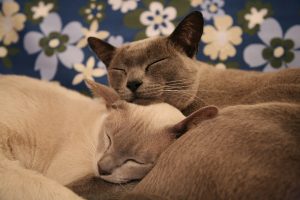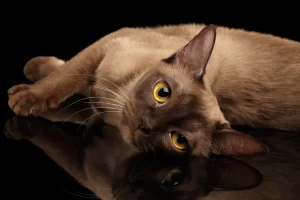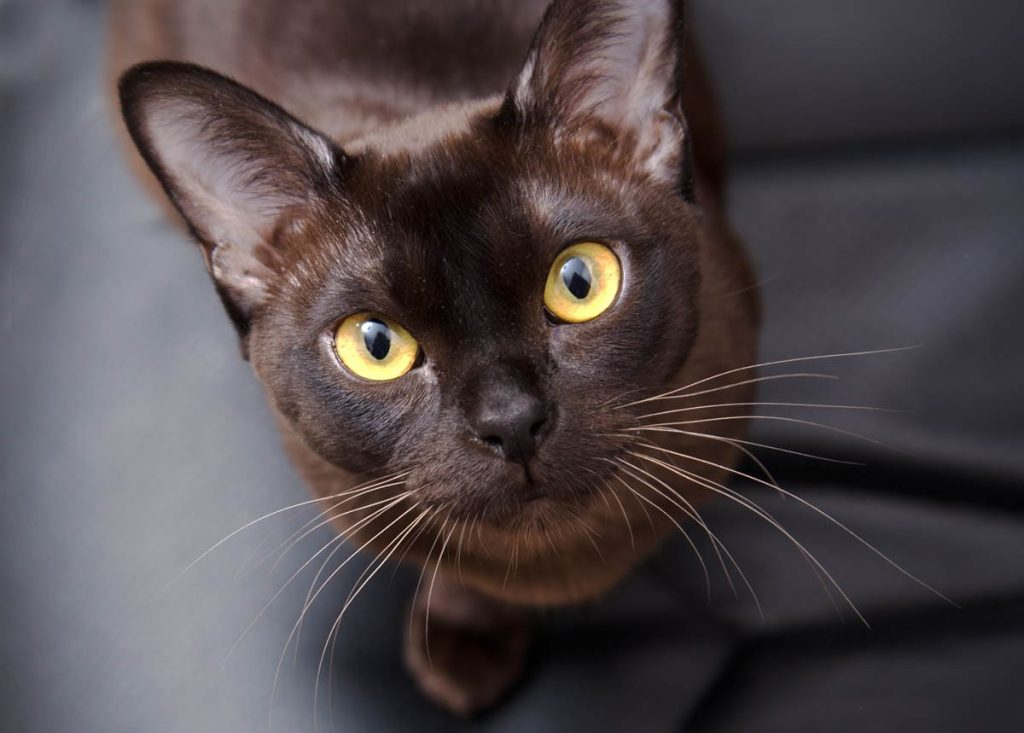Basic information about Burmese Cats
The Burmese cat is a beautiful and affectionate breed known for its sleek coat, expressive eyes, and playful personality. Here’s an overview of Burmese cats:
Appearance
Burmese cats are medium-sized with a compact and muscular body. They have a rounded head with prominent cheekbones and a short, straight nose.
Their eyes are one of their most distinctive features, being large, expressive, and typically a vivid gold or yellow color. Their eyes are set wide apart and contribute to their sweet and endearing expression.
The coat of a Burmese cat is short, fine, and silky to the touch. It lies close to the body and comes in a variety of colors, including sable (dark brown), champagne (light brown), blue, and platinum. The coat has a glossy sheen and requires minimal grooming.
Temperament
Burmese cats are known for their affectionate, social, and people-oriented nature. They are often described as “velcro cats” because they enjoy being close to their human companions and may follow them from room to room.
They are intelligent and curious cats that enjoy interactive play and mental stimulation. Burmese cats are known for their playful antics and may enjoy playing fetch or engaging in puzzle toys.
Despite their playful nature, Burmese cats are also loving and gentle. They form strong bonds with their families and thrive on attention and affection. They are often good with children and other pets, making them excellent family pets.

Origin
- Ancient Roots in Burma: Burmese cats have a rich heritage deeply rooted in Burmese culture. They were revered as sacred temple cats in ancient Burma, where they were highly regarded for their grace, beauty, and companionship. Burmese cats were believed to bring good fortune and were often kept as cherished pets by royalty and temple monks.
- Introduction to the Western World: The first Burmese cats were brought to the Western world in the late 19th century. British soldiers stationed in Burma during the colonial period encountered these elegant cats and were captivated by their unique appearance and charming temperament. Some soldiers brought Burmese cats back to England as exotic souvenirs, introducing them to Western audiences for the first time.
- Development of the Breed: The modern Burmese cat breed as we know it today began to take shape in the early 20th century. Burmese cats were selectively bred in England and the United States to emphasize certain desirable traits, including their distinctive coat color, compact body, and sweet temperament. The breed standard was established, and efforts were made to preserve and promote the breed’s unique characteristics.
- Recognition by Cat Associations: The Burmese cat breed gained recognition from major cat associations, including The International Cat Association (TICA) and the Cat Fanciers’ Association (CFA), in the mid-20th century. The breed’s popularity grew steadily, and Burmese cats became cherished pets and beloved companions in households around the world.
- Conservation Efforts: During World War II, the Burmese cat breed faced challenges due to food shortages and disruptions in breeding programs. However, dedicated breeders worked tirelessly to preserve and protect the breed, ensuring its survival for future generations. Through careful breeding and conservation efforts, the Burmese cat breed thrived and continued to captivate cat lovers with its beauty, charm, and affectionate nature.
History
The Burmese cat breed originated in Burma (now Myanmar) and has a long and storied history dating back centuries. They were revered as sacred temple cats in Burmese culture and were believed to bring good luck and prosperity to their owners.
Burmese cats were first introduced to the Western world in the late 19th century when they were brought to England by British soldiers returning from Burma. They gained popularity as pets and were eventually imported to the United States in the early 20th century.
The breed faced challenges during World War II, but dedicated breeders worked to preserve and promote the Burmese cat breed. They were officially recognized by major cat associations, including The International Cat Association (TICA) and the Cat Fanciers’ Association (CFA), in the mid-20th century.
Care
Burmese cats have short, low-maintenance coats that require minimal grooming. Occasional brushing helps to remove loose hair and distribute natural oils, keeping the coat healthy and shiny.
Provide a balanced and nutritious diet appropriate for your Burmese cat’s age, weight, and activity level. Ensure access to fresh water at all times, and monitor their food intake to prevent obesity.
Keep your Burmese cat mentally and physically stimulated with interactive toys, puzzle feeders, and play sessions. They enjoy climbing, exploring, and engaging in activities that challenge their agile minds and bodies.
Schedule regular veterinary check-ups to monitor your Burmese cat’s health and address any potential issues early on. Keep up with vaccinations, parasite prevention, dental care, and routine blood work as recommended by your veterinarian.

Overall, Burmese cats are cherished companions known for their beauty, affectionate nature, and playful personality. They make excellent pets for individuals and families alike, bringing warmth, companionship, and joy to their homes for many years.
More posts you might be interested in:

